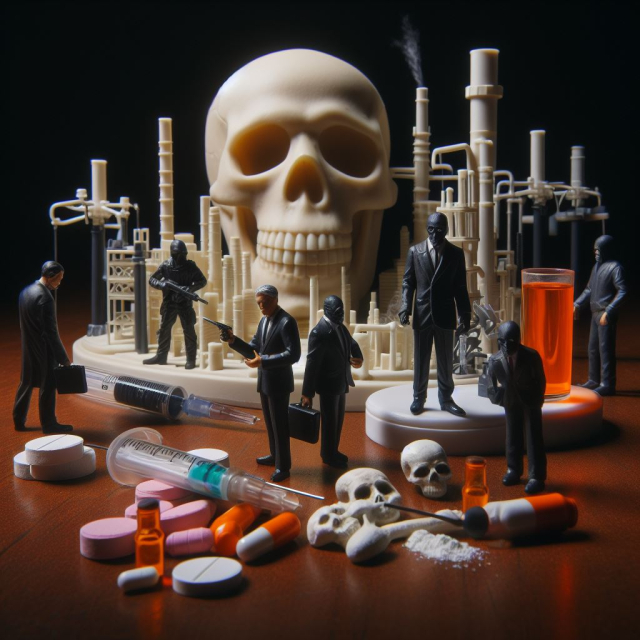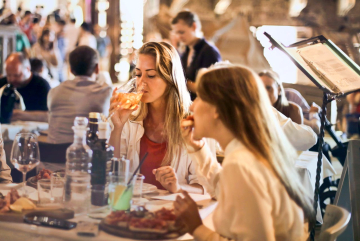Illicit drugs represent one of the biggest challenges to public health and safety around the world. These substances, prohibited by law due to their dangerous and addictive effects, have a devastating impact on individuals, families and entire societies. This article explores the nature of illicit drugs, their most common types, the effects they have on the body and mind, as well as strategies to combat their use and distribution.
Common Types of Illicit Drugs.
Cocaine.
Cocaine is a powerful stimulant extracted from the leaves of the coca plant, which is mainly grown in South America. It comes in the form of a white powder and is consumed by inhaling, injecting or smoking (crack).
Effects:
- Temporary increase in energy and alertness.
- Intense euphoria.
- Increased heart rate and blood pressure.
Risks:
- Rapid and severe addiction.
- Cardiovascular problems.
- Nasal damage (due to inhalation).
- Risk of overdose.
Heroin.
Heroin is a highly addictive opioid derived from morphine. It comes in the form of a white or brown powder and is generally consumed by injection, inhaled or smoked.
Effects:
- Intense euphoria.
- Sense of well-being.
- Sedation and drowsiness.
Risks:
- High probability of addiction.
- Infectious diseases (due to shared use of needles).
- Life-threatening overdose.
- Long-term damage to the brain.
Methamphetamine.
Methamphetamine is a powerful central nervous system stimulant. It comes in crystal (crystal methamphetamine) or powder form, and is smoked, inhaled, injected, or ingested.
Effects:
- Increased energy and physical activity.
- Euphoria and feeling of power.
- Loss of appetite.
Risks:
- High addiction and dependence.
- Long-term brain damage.
- Heart and dental problems.
- Psychosis and violent behavior.
Ecstasy (MDMA).
Ecstasy is a synthetic drug that acts as a stimulant and hallucinogen. It comes in the form of pills, capsules or powder, and is generally consumed by mouth.
Effects:
- Euphoria and feeling of empathy.
- Increased energy.
- Distortion of time perception.
Risks:
- Dehydration and overheating.
- Long-term brain damage.
- Heart problems.
- Post-use depression and anxiety.
Dope.
Although marijuana has been legalized in several countries and states for medicinal and recreational use, it remains illegal in many places. It is consumed smoked, vaporized or ingested.
Effects:
- Relaxation and euphoria.
- Alteration of the senses.
- Increased appetite.
Risks:
- Psychological dependence.
- Respiratory problems (from smoking).
- Impairment of memory and learning.
- Psychosis in predisposed individuals.
Impact on Health and Society.
Effects on Physical and Mental Health.
Illicit drug use can cause a wide range of health problems, which vary depending on the drug, dosage, and duration of use. Physical effects include damage to vital organs, such as the heart, lungs, liver, and kidneys. Additionally, they can weaken the immune system, increasing susceptibility to infections.
In terms of mental health, illicit drugs can cause psychiatric disorders, such as depression, anxiety and psychosis. Addiction itself is a chronic mental disorder, characterized by the compulsive desire to use the drug despite its negative consequences.
Social Consequences.
Illicit drug abuse has devastating repercussions on personal relationships and family structure. Addicted people often prioritize their use over their responsibilities, which can lead to deteriorated relationships with family and friends, job loss, and legal problems.
At the community level, drug trafficking is associated with violence, corruption and organized crime. Communities affected by drug trafficking often experience an increase in crime rates and a decrease in quality of life.
Prevention and Treatment Strategies.
Prevention.
Preventing illicit drug use requires a multifaceted approach that includes education, public policies, and community programs. Education is essential to inform young people about the risks associated with drug use. Prevention campaigns must begin in schools and continue in the community.
Effective public policies include strictly regulating access to controlled substances, promoting healthy lifestyles, and implementing substance abuse prevention programs.
Treatment.
Treatment for illicit drug addiction is a complex process that must address both the physical and psychological aspects of dependence. Treatment approaches include:
- Detoxification: The first step in treating addiction is detoxification, which involves removing the drug from the body. This process must be supervised by health professionals to manage withdrawal symptoms.
- Behavioral therapy: Behavioral therapies, such as cognitive behavioral therapy (CBT) and dialectical behavior therapy (DBT), are effective in changing the patterns of thinking and behavior that contribute to addiction.
- Medications: In some cases, medications are used to help manage withdrawal symptoms and reduce cravings. For example, methadone and buprenorphine are used to treat opioid addiction.
- Social support: Support groups, such as Narcotics Anonymous (NA), provide a support network for people in recovery. Social support is crucial to maintaining long-term sobriety.
Damage reduction.
Harm reduction is a strategy that seeks to minimize the negative consequences of drug use without necessarily eliminating use. Examples of harm reduction programs include supervised injection sites, needle exchange programs, and access to naloxone to prevent opioid overdoses. These initiatives not only save lives, but also connect people to health services and treatment.
Illicit drugs present a significant challenge globally, affecting the health and well-being of millions of people. Understanding the types of drugs, their effects and risks is crucial to developing effective prevention and treatment strategies. Education, public policies, treatment programs, and harm reduction initiatives are essential components to combating the illicit drug crisis.
It is essential that societies continue to work together to address the underlying causes of drug abuse and provide the necessary support for those affected by addiction. Only through a comprehensive and compassionate approach can we hope to reduce the devastating impact of illicit drugs on our communities and build a healthier, safer future for all.






